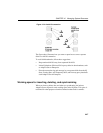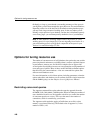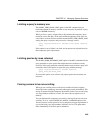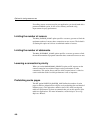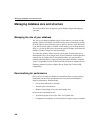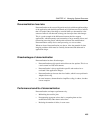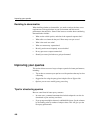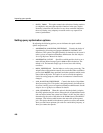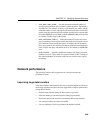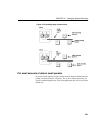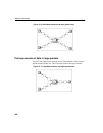
CHAPTER 12 Managing System Resources
455
Denormalization has risks
Denormalization can be successfully performed only with thorough knowledge
of the application and should be performed only if performance issues indicate
that it is needed. One of the things to consider when you denormalize is the
amount of effort it will then take to keep your data up-to-date with changes.
This is a good example of the differences between decision support
applications, which frequently need summaries of large amounts of data, and
transaction processing needs, which perform discrete data modifications.
Denormalization usually favors some processing, at a cost to others.
Whatever form of denormalization you choose, it has the potential for data
integrity problems which must be carefully documented and addressed in
application design.
Disadvantages of denormalization
Denormalization has these disadvantages:
• Denormalization usually speeds retrieval but can slow updates. This is not
a real concern in a DSS environment.
• Denormalization is always application-specific and needs to be re-
evaluated if the application changes.
• Denormalization can increase the size of tables, which is not a problem in
Adaptive Server IQ.
• In some instances, denormalization simplifies coding; in others, it makes
it more complex.
Performance benefits of denormalization
Denormalization can improve performance by:
• Minimizing the need for joins
• Precomputing aggregate values, that is, computing them at data
modification time, rather than at select time
• Reducing the number of tables, in some cases



